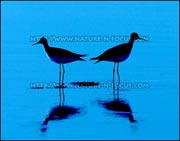Posted by bobin Articles
Published Mascaret, Moncton, N.B.
As human beings we were provided providentially with a characteristic called “freewill”. So why is it that so many of us avoid the logic potential associated with “freewill” and allow it to be pushed aside by supreme ego.
Eco tourism is a gift. A prosperous blending of Mother Nature’s gifts and our ability to translate the natural into financial success. For whatever reason I have found that common sense is not so common. It took 5 years from conception to the opening of the Ecological Park in Lameque…… a dream of naturalists and conservationists, an opportunity for mankind to commune with hundreds of species of plants, insects, birds and wildlife. So why did it take so long. Why after 25 years is an ecological project of significant magnitude still nothing more than idle chatter by the village council in Dorchester. Successful eco tourism is hampered by a three-letter word…ego. Logic would tell us that a collective set of intelligent beings could in short order conclude that a plan put in place and in motion to protect wildlife and their habitat is best done sooner rather than later.
The Ecological Park at Lameque is now in its 3rd year of operation and I cordially invite readers to make the 3-hour trek to this quaint corner of New Brunswick. Not only is the Park itself worth the visit and a guided tour, but the culture of our Acadian brothers and sisters is a must see and do interactive opportunity. Photo opportunities are vast, the seafood is fresh, the aquarium at Shippigan is a must, the Acadian Village in Caraquet is an absolute ……and dropping in on Canada’s Rockwell…Donald McGraw at his gallery in Pokemouche is mandated.
The Acadian Peninsula is a collection of villages and towns along the Bay of Chaleur, Northumberland Strait and the Gulf of St. Lawrence. Wholesome people with big dreams who have risen to meet the challenge presented to them by what they have on their doorstep…gifts from Mother Nature. But, like Dorchester at Johnson’s Mills, nothing comes easy. The Acadian Peninsula is a treasure. It is unknown to most, including the residents as the last identified migratory shorebird stop over point in North America. Thirty-three (33) species of migratory shorebirds make their way north and south at various times during the year. From magnificent breeding plumage to recently fledged chicks heading back, the 33 species can be observed at different locations and different times across the Acadian Peninsula from early May through mid-October.
Dorchester has a treasure also. During a six week period, from mid July to the end of August, the heaviest concentration of south bound semipalmated sandpipers, semipalmated plovers and a host of other migrating shorebirds stop in at Bucks Flats and Johnson’s Mills, five miles from the village center of Dorchester. They gorge themselves on the Corophium, better known as mud shrimp, double their weight and then soar into flight on their 4500 mile, nonstop flight to South America and their winter grounds. A few curious bird lovers have experienced the incredible aerobatic displays, provided by thousands of these sparrow sized birds as they deke and dive as they search the mud flats for their long distance fuel reserves.
Nature Conservancy of Canada is buying up a lot of the shore property now. They have a small interpretive Center and yet Dorchester has done very little outside of its back woods attempt at a Sandpiper Festival to capitalize on the extreme potential to educate vast numbers of north Americas population and to reap the financial rewards that come with controlled eco tourism.
It is becoming apparent that the innate logic that we are born with as humans is not necessarily applied when two or more are gathered in the name of conservation. Unfortunately, when groups of naturalist, bird lovers, environmentalists and conservationists get together around a table to discuss the best way to educate, protect, preserve and enjoy nature and its inhabitants, the dreadful disease of inertia has a tendency to take over the process. Inertia, the Siamese twin of ego; brought on by a severe case of “if it isn’t done my way, it’s not going to get done” is a doomsday scenario.
The Semipalmated sandpipers of my childhood (mid-fifties) numbered around a million. By 2004 that number had dropped to approximately 78,000 according to Canadian Wildlife biologists.
The inertia plagued brain-trusts in my maternal home of Dorchester could help these birds but a few “big fish in small ponds” are unable to commit to a broadened effort to develop the region as an eco tourism educational and research center. Maybe the Dorchester town council should take the drive north to Lameque and see how it can be done. Learning is the first step to saving a dying breed of migratory shorebird.
Does anyone in Dorchester have any common sense?
















